Parrot
Parrot Anafi FPV drone: pilot and film with the eyes in the camera
Aprox. 852€ - see price -
See specificationsAlthough it is now also intended for professionals (Anafi Thermal and Work), the Anafi from Parrot continues to appeal to the general public by offering an FPV version, designed for immersion flight. To make the most of the landscapes and simplify your piloting.
Positive points
Compact and easy to carry.
Ease of use.
Fluid and reassuring stabilized flights.
Good autonomy and rechargeable battery directly in USB-C.
Satisfactory image quality in both photo and video.
Bad points
Display settings in the FPV mask not very practical.
Low image resolution in FPV.
Disappointing range.
No obstacle detection.
Visual tracking and paid flight planning modes.
Our review
Presentation
Since its launch on July 1, 2018, Anafi has become Parrot's all-purpose drone, available in professional versions (Anafi Word, Anafi Thermal) as a general public. The French manufacturer has decided to further extend the life of its quadrotor by offering it in an FPV pack ("first person view" or "first person view") including various accessories, notably the Cockpitglasses 3, a sort of reality mask. virtual used to display the image captured by the drone in real time before the eyes of the user.
What give the impression of flying in the device itself. If the Anafi of this FPV pack changes little, it nevertheless benefits from the small improvements that Parrot has brought to it over time.
The Anafi FPV is launched at € 799 (public price including tax), or € 100 more expensive than the Anafi alone with its radio control. Compared to the latter, we gain a transport backpack, the Cockpitglasses 3 mask and some improvements to the drone itself.
The Anafi FPV is practically identical to the classic Anafi that we already tested a year ago, so we focused on what it brings, namely immersion flight. Flight behavior and image quality have not changed, which is why we invite you to consult the complete Anafi test if you want to know more about these two points.

Getting started
We announced in the preamble, the Anafi FPV is almost identical to the classic Anafi. Almost, because if its electronics and camera have not changed, its four arms and the motors therein are those of the most recent Anafi Thermal - latest version which is distinguished by its thermal camera. It saves space, the Anafi FPV still measuring 2 cm less than the Anafi in length.
The engines and their propellers are also higher perched, which is appreciable during takeoff on terrain that is not necessarily very flat (lawn, etc.). Slight weight gain also in passing, the Anafi FPV weighing only 315 g (-5 g). We also note some improvements on the side of the finish of its camera (4 screws and a small plate less on the back).
Apart from these differences, the Anafi FPV does not evolve; our criticisms formulated during the Anafi test are therefore still valid. If its power arms make a better impression, it keeps this fragile appearance compared to a Mavic Air, for example. In particular at the level of its camera, very exposed and articulated on a mechanism with small moving parts which does not inspire great confidence. This does not mean that it will break at the slightest shock, but the Anafi being devoid of obstacle sensors, it is advisable to remain careful when piloting it.
However, what is also still true is that the Anafi FPV remains a particularly compact drone given its equipment. It is still just as practical to take with you and even more so with its specific backpack, supplied only with the FPV pack.
A small bag that offers storage to the dimensions of the drone, its radio control, its FPV mask and its few accessories. We would not have spit on a second battery on the other hand, even if it meant paying an additional € 50, for example.
With the release of the Anafi FPV came an update to the Freeflight 6 application introducing new flight modes that can only be activated in the FPV configuration. The good news is that the classic Anafi can also benefit from it (all you need is an FPV mask for a smartphone that is compatible). A relief for the owners of the first version, even if it is not without some constraints. The Cockpitglasses 3 mask supplied with the Anafi FPV incorporates 2 buttons that activate specific areas on the touch screen of the smartphone inserted there.
The more important of the two, on the upper edge, is used to access the application menu, when the other is there to activate the vision function through the camera of the smartphone (SeeThrough mode), if one wishes to throw an eye on our environment without removing the face mask, for example. A function that can be useful to avoid disrupting the display by touching the smartphone, since the slightest misalignment of the screen in front of the lenses causes a splitting of the image. However, the adjustments can be quite delicate and the smartphone moves a little too easily in its housing. This is the price to pay for compatibility with most mobiles on the market, but guides to better hold the smartphone in place and lock its position would not have been refused.
Fortunately, we can still count on an adjustment of the spacing between the lenses to make it corresponds to the interpupillary distance of the wearer. The adjustment is not obvious and is done when the display becomes clearest, in particular that of the texts displayed in the menu. Eyeglass wearers (and especially presbyopics who see poorly up close) will also appreciate being able to keep their frames without too much difficulty.
In terms of comfort, the Cockpitglasses 3 mask is quite rudimentary, far from what recent virtual reality headsets can offer, for example. It inevitably suffers from its foldable design which certainly allows it to be stored easily, but does not particularly make you want to wear it for hours.
This is good, since an Anafi battery does not allow you to fly for more than 25 minutes. The flexible rubber that is placed on the face is not unpleasant, however, and insulates fairly well from outside light, while the elastic straps provide sufficient support on the skull despite the 387 g of the set (with an Honor Play smartphone 174 g); this insofar as, unlike a VR headset, there is no need to move the head excessively during the flight, the camera being directed only with the radio control and not following the movements of the mask. It therefore remains bearable and we quickly focus on driving, forgetting the few pressure points that can appear on the face.

Flight
In flight, there are no technical differences from the Anafi. The characteristics are the same and the Skycontroller 3 radio control does not change either. The new features are in fact to be found in terms of immersion flight functions, introduced with the 6.6.0 update to Freeflight.
To fly in immersion with the Anafi, simply activate the FPV mode, slide your mobile into the mask and then put it on. Press the take-off button on the radio control and we are in stabilized flight, ready to enjoy the landscapes with fluid movements and the moderate speed of the "Film" mode (activated by default). The FPV shows here its interest in terms of the simplicity of framing. The larger display gives better visibility of what is being filmed and the camera movements are a little more instinctive. Above all, we are not disturbed by the reflections that often occur when driving in good weather. However, it must be done with the modest display resolution which prevents you from seeing as clearly as if you were looking directly at the smartphone screen outside the mask.
On the interface side, Parrot took care to report the main information on the screen, so that you never have to remove the mask: flight time and charge levels, height, horizontal distance, recording time and even information on the exposure, zoom level, etc. FPV mode is not just a simple option for having fun, you can really use the drone by changing its settings in a special menu that is manipulated with the sticks of the radio control.
At the very top of the display in FPV, a bar indicates in which direction the drone is, which is very useful to face it well and thus maintain an optimal radio signal strength. It should however be specified that to comply with French law, flying with a drone in FPV must be done with an observer who must keep the aircraft in his field of vision, while the flight height and maximum distance are respectively limited to 50 m and 200 m. On this subject, unless perhaps moving in perfectly flat terrain without any obstacle, the maximum range is far from the 4 km announced. Reaching the 2 km is already a satisfaction and we had to interrupt flights less than a kilometer away. Fortunately, we can count on an RTH function to automatically return to the starting GPS point. Be careful all the same, for lack of obstacle sensors, the drone returns more or less blind; you can simply tell them the minimum flight height (30 m by default).
In terms of piloting, we especially note the appearance of a flight mode called Arcade. With it, the drone moves in the direction aimed by the camera, giving the impression of controlling a ship in a video game. Combined with the new "Racing" and "Cinematic" settings that allow the Anafi to take an angle when it turns (roll), there is plenty to have fun and even give a different style to our videos.
The Anafi remains however stabilized whatever the setting chosen, its behavior is simply more or less dynamic - you can also choose to increase its overall reactivity or adjust the parameters individually. In addition, the latency of the video transmission is far too high (around 300 ms) to claim truly nervous flights. It is therefore not a question of transforming the Anafi into a racer, the latency for a racing drone being rather of the order of 30 ms. We also advise not to try the devil by wanting to fly at high speed in congested spaces, since in the absence of obstacle detection system, the slightest piloting error would result in a crash.
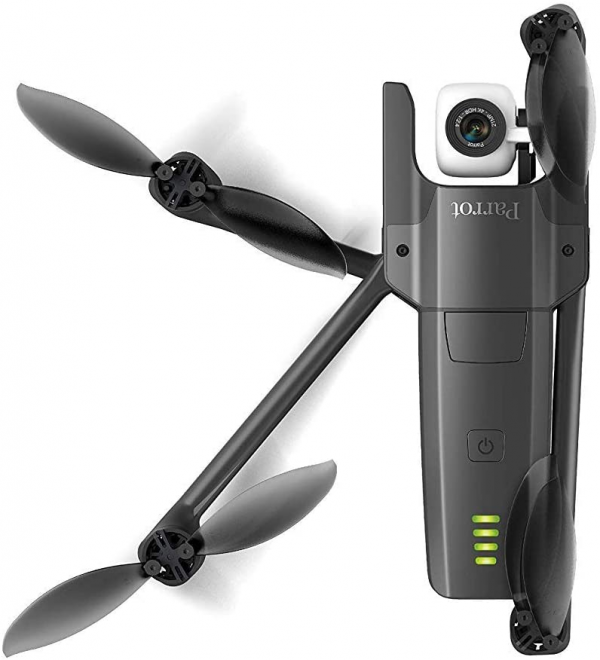
Image quality
The camera of the Anafi FPV being the same as that of the classic Anafi, we let you discover our evaluation of the image quality in our complete test of the latter, to deepen here rather the quality of display in FPV. This logically depends on that of your smartphone.
For our part, for lack of being able to take advantage of the beautiful Oled QHD screen of our Galaxy S6 (refusal of connection with the radio control), we used an Honor Play, mid-range smartphone incorporating an LCD screen with a Full HD + definition (2,340 x 1,080 px). Not ridiculous therefore, but we should not expect the fine display of a dedicated FPV headset like the DJI Goggles, especially as the display is far from using the whole screen, which further reduces the resolution.
If the display in the mask is inevitably less fine than that observable on the screen of the smartphone in direct vision, lower resolution requires, it nevertheless offers sufficient precision to drive in good conditions and especially with a better perception of speed and, to a lesser extent, distances (no 3D vision, single camera required).
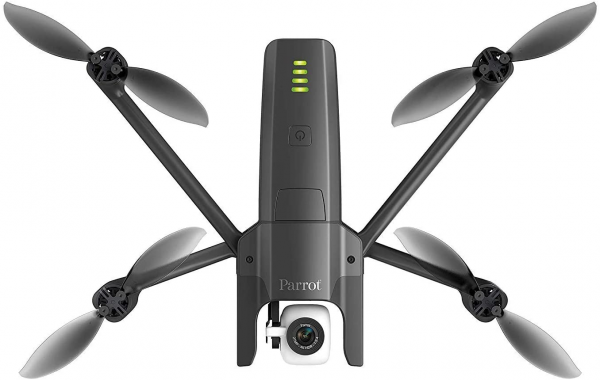
Autonomy
Equipped with the same battery as the classic Anafi, the Anafi FPV logically offers the same autonomy. If you only reach the promised 25 minutes of flight by being really flexible with the controls, exceeding the 20 minutes is no problem (with a new battery).
We always appreciate the possibility of recharging its battery directly from its USB-C connector, as we would with any recent smartphone. Allow about 2 hours anyway with a charge of 2.4 A, which also does not allow to chain flights quickly if you do not have several batteries. As such, getting a second battery is highly recommended.
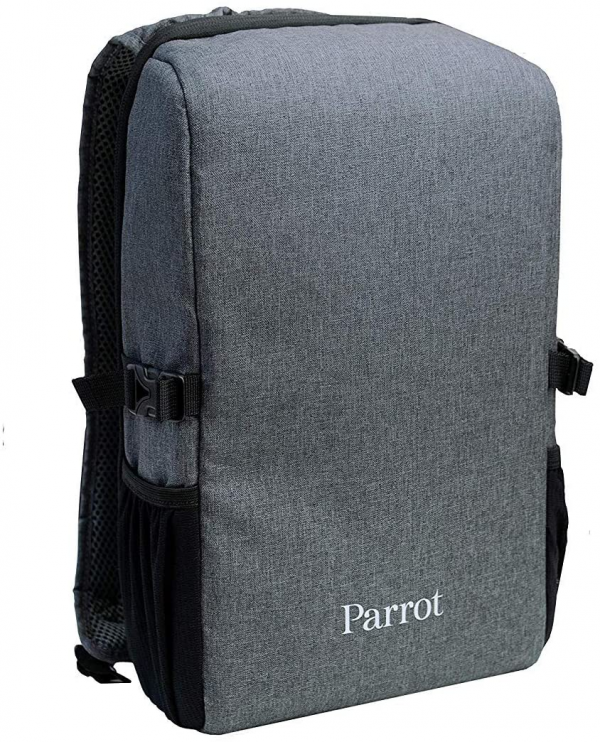
Conclusion
If its FPV functions do not make the Anafi a racing drone at all, they make piloting pleasant and more accessible to beginners with the new flight modes offered. The flights are smooth and allow you to enjoy the landscapes while filming with a good image quality. Basically, this does not change the overall experience and the Anafi keeps the faults that we had noted in its initial test, but Parrot still offers here an attractive and affordable solution for the general public.
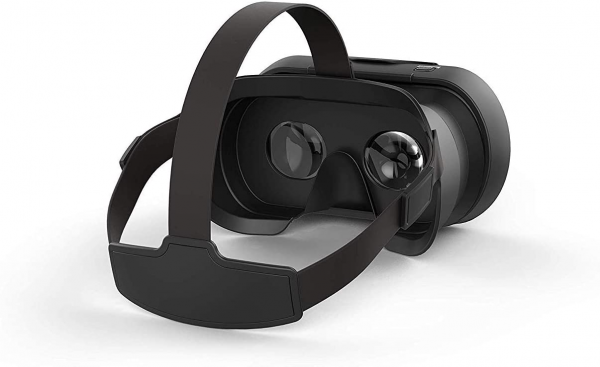
Specifications
Reviews

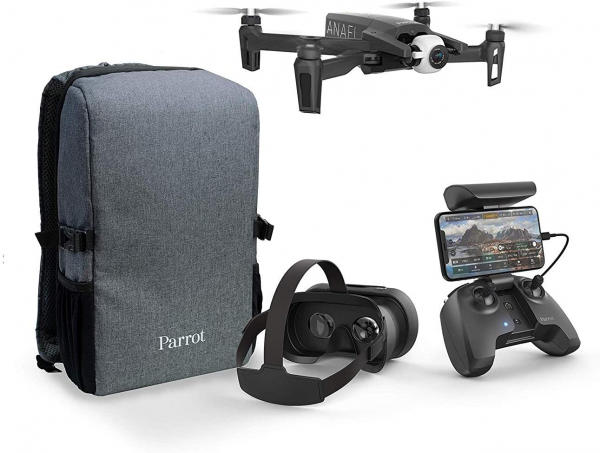
Finally a drone which can compete with the DJI Mavic.
This is a fantastic little drone. It is light and extremely portable. It has a great camera with an outstanding 3x zoom. It has a true 25 minute flight time. It has a half-dozen special flight modes as well as the essential GPS position hold and smart RTH. This is the first drone on the market that can honestly compete with the DJI Mavic. Today I flew both the Anafi and the Mavic for several hours. The Mavic has twice the flight range, but the Anafi is competitive or better in just about every other aspect. Overall, I prefer the Anafi as my "travel drone" now.
(I am an FAA licensed drone pilot with six years of experience flying many different drones including the DJI Phantom series, Mavic, and Spark as well as Yuneec, Cheerson, Holy Stone, and Hubsan drones.)
Need to wait for 15 days before unlocking "follow me"...
The Anafi is an incredible piece of technology, with stunning pictures and video. It is lightweight and compact, and very portable.
The hardware people did an outstanding job in developing this drone. Where they fall short is on the execution / app side. Having to pay an extra $ 19.90 to unlock "follow me" is just petty. Why not include this awesome feature in the price, since most people are going to use it. When I tried to click on "Buy" in the app, nothing happened. I rebooted my iphone, still not possible to buy "follow me". Uninstalled and reinstalled Freeflight, still no go. I finally contacted Tech Support, who got back to me within hours (good customer service!). Here is what they said:
"Kindly note that in order to purchase the follow me application you need to have completed the trial version first for 15 days, After completion of the 15 days you will be able to proceed and purchase the application with the normal steps."
That just blows my mind! I have to wait for 15 days before I can buy the coolest features on the drone? Seriously people? Why? And if you want to slap users with such an onerous policy, how about telling them about this policy, either in the app, or on the website?
Bad quality control
Thing this over Mavic because of USB-C charging and 180 degree camera. Apparently there is zero quality control on these things.
The first one I received, I was pretty excited about it ... Until I realized that one of the feet was damaged (see photos) Mind you, I never flew the thing. Literally only took it out of the case. So, whatever. Amazon has great customer service, I'll just get a replacement.
Second one arrived two minutes ago. Opened the case and .... the same damage in the same spot. Sure, it's only the plastic not fitting together properly, but it's not like this is as cheap as the Parrot Minidrones. More importantly if you can't get the plastic right how in the world can I trust the drone itself (considering it's massively more complicated.)
Really disappointed at this point.
Great image even when you zoom in, flight time above the competition and so quick to unfold and fly
I only got the drone a couple days ago so this is a first review right as I landed my third flight.
To start with, with the Anafi, Parrot brings THREE NEW FEATURES on the drone market AT THIS PRICE POINT.
First, the image: the Anafi captures a crisp 4K HDR which is great to work with in post. Just AirDroped some videos of a crowd from my MacBook Air to my iPhone ... the level of details is amazing even if you pinch and zoom with your mobile.
The other new spec is the upward tilt of the gimbal (180 °), this is a totally new perspective and I can't wait to see what creative shots Anafi users will make out of this feature. My own creativity is puzzled.
Lastly this drone offers in-camera zoom capabilities: FINALLY! This is especially great to create a vertigo effect directly from your drone as opposed to creating it in post.
As for the gimbal, even in sports mode, it creates stable footage. I was worried about the 3 axis gimbal (one digital stabilization and three mechanical) but it seems to be working very well, even if I still want to explore that feature. But I read many times that the digital stab was better on the long run as it can't break as a mechanical ones ...
As far as the battery goes, I flew for 19min and landed with 17% battery left so we are right in that sweet spot: about 25min per battery. Finally, the drone itself is compact and quick to fold, I'd say less than a minute to operate and coming from a Phantom 3, not having to screw the props on is a big time saver.
Then, on my test-runs the wind was not strong so I couldn't test the 50km / h wind resistance (for comparison, the mavic air is about 40km / h). Maybe I'll write some other post to let you know. Until then, WELL DONE ANAFI!